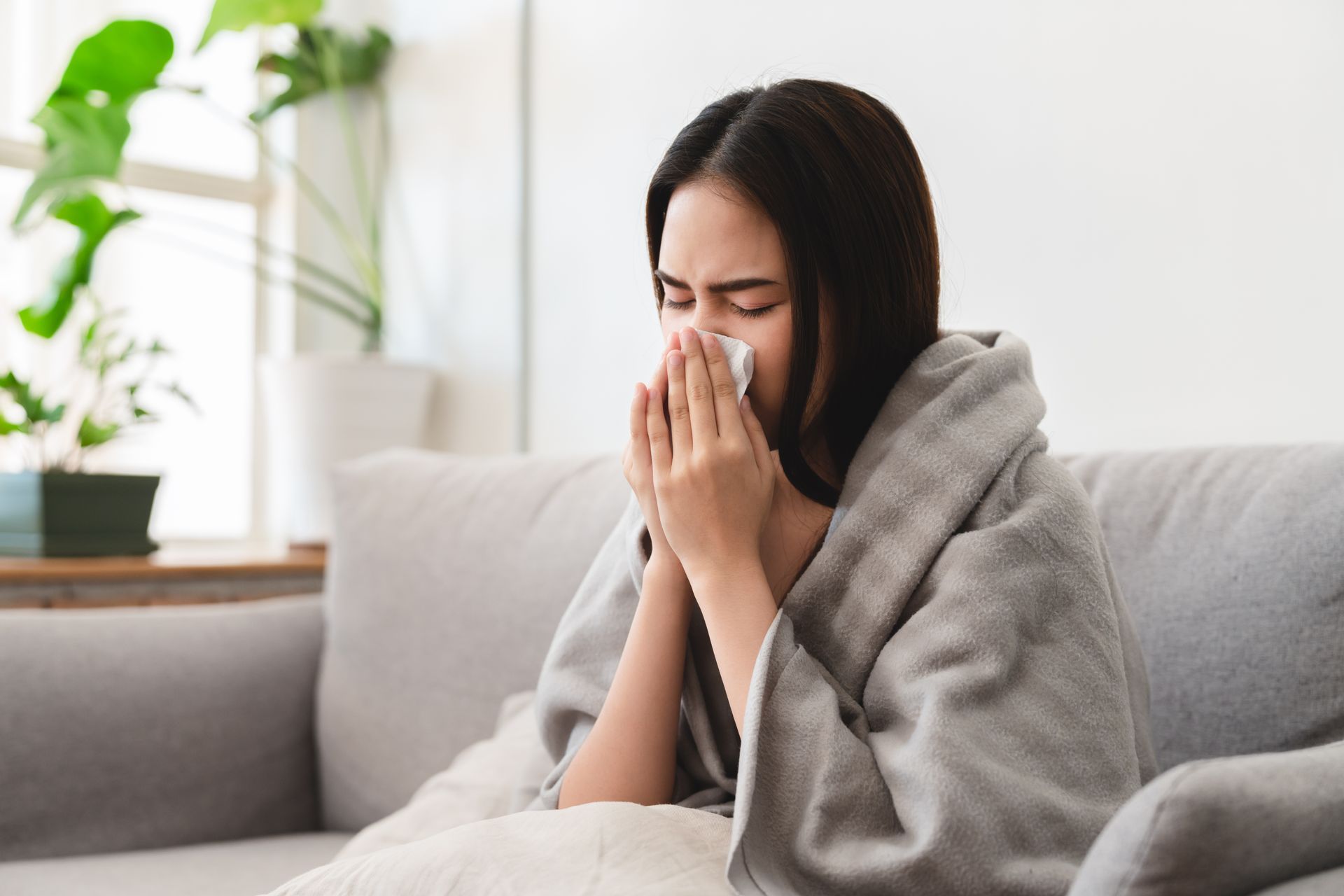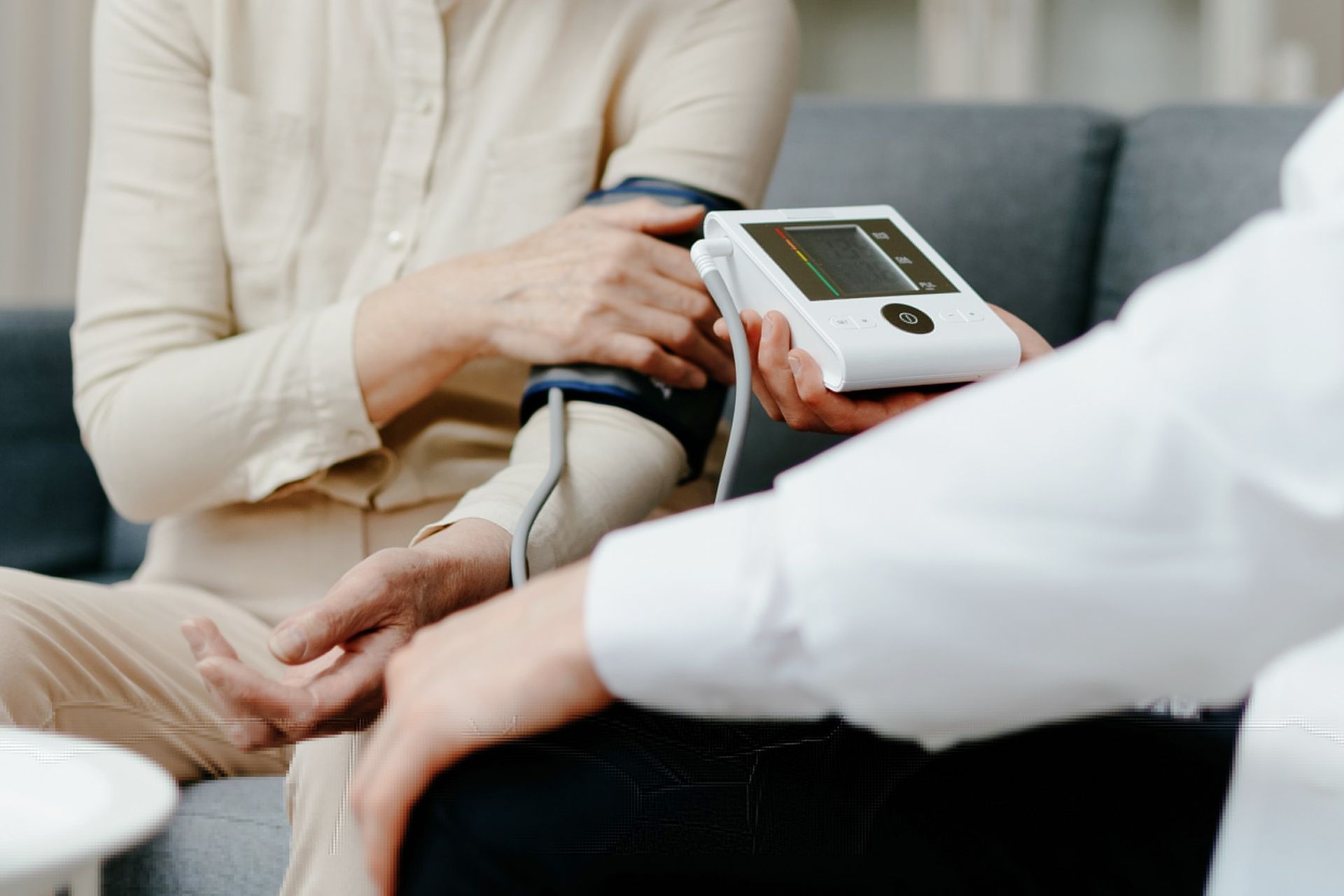The cooler breeze, colorful leaves, and cozy foods of fall are here. While it’s a season many of us love, it can also be a time when blood pressure sneaks up higher than we realize. According to the Centers for Disease Control and Prevention (CDC), hypertension contributes to nearly 75 percent of cardiovascular disease deaths in the United States. Almost half of all U.S. adults (48.1 percent) have hypertension, but only a fraction manage to keep it under control.
Think about it—holiday treats, shorter days, and added stress from busy schedules all stack up this time of year. It’s easy to let healthy routines slip, and before you know it, your numbers may be creeping upward and increasing your risk.
Houston Family Practice makes it easier to stay on track. With practical steps and personalized care, you can enjoy the best parts of fall while maintaining steady
blood pressure levels and your heart health strong. This is your all-in-one guide to maintaining a healthy blood pressure this fall.
Prioritize Your Heart Health This Season
Understanding Blood Pressure Basics
Blood pressure is one of the most important indicators for evaluating your overall health, and understanding it is the first step to keeping it under control. Knowing what constitutes normal blood pressure for adults helps you recognize when your levels are within a healthy range.
Blood pressure is a measure of how hard your heart pushes blood through your arteries. It is shown as two numbers:
- Systolic (top number):
The pressure when the heart beats.
- Diastolic (bottom number): The pressure when the heart rests.
Here’s what the numbers mean:
- Normal:
Less than 120/80 mmHg
- Elevated:
120–129 systolic and less than 80 diastolic
- High/Hypertension (Stage 1):
130–139 systolic or 80–89 diastolic
- High/Hypertension (Stage 2):
140/90 mmHg or higher
Fall Lifestyle Factors That Affect Blood Pressure
Understanding your blood pressure level is important, and that includes recognizing the habits that may be causing a rise in your readings. Daily habits often have the biggest influence on whether your blood pressure stays in a healthy range. Fall is a wonderful season, but the changes it brings can affect your heart health in ways you might not expect.
Here are a few lifestyle factors to watch this time of year:
Fall is filled with delicious comfort foods, from pumpkin pies to salty holiday snacks. These seasonal treats are hard to resist, and many are high in sugar and sodium, both of which can increase blood pressure. Choosing a
diet for high blood pressure that includes plenty of fruits, vegetables, and whole grains can help you enjoy the season without compromising your heart health.
Cooler weather may be perfect for outdoor walks and hikes, but shorter days often mean less physical activity. Staying active is one of the most effective ways to lower blood pressure naturally. Even small bursts of activity, such as raking leaves or short home workouts, can make a significant difference.
Back-to-school routines, year-end deadlines, and holiday planning can pile on stress. Stress hormones may cause temporary spikes in blood pressure, and over time,
too much stress can strain the heart.
Fewer hours of daylight and changes in routine can throw off sleep patterns. Poor sleep or irregular schedules can raise blood pressure and make it harder to manage overall health.
These shifts are normal parts of the season, but being aware of them gives you the chance to make small changes that keep your numbers steady.
Practical Tips for Keeping Blood Pressure in Check This Fall
Although knowing how fall habits can affect your blood pressure is important, taking action is what really makes a difference. Here are some practical
ways to lower blood pressure this season:
- Eat heart-healthy seasonal foods:
Enjoy squash, apples, pears, and leafy greens. A balanced blood pressure diet helps you savor fall flavors without increasing your levels.
- Stay active: Walk, hike, rake leaves, or do quick indoor workouts to keep moving.
- Manage stress: Try meditation, deep breathing, or quiet moments to stay calm.
- Limit alcohol and caffeine:
Enjoy social drinks in moderation to avoid temporary spikes in blood pressure.
- Stick to a sleep schedule: Aim for 7–8 hours of sleep each night.
- Stay hydrated:
Drink enough water, even in cooler weather, to support heart health.
Simple adjustments like these can help you enjoy fall traditions while keeping your blood pressure steady and your heart healthy.
Monitoring Your Blood Pressure
Tracking your blood pressure regularly makes it easier to keep it under control. At-home monitoring gives you a clear picture of how your lifestyle affects your numbers.
- Use a home cuff:
Simple and accurate, a home cuff device lets you perform a blood pressure check comfortably. Make sure the cuff fits properly and follow the instructions.
- Check and record regularly:
Measure at the same time each day, ideally in the morning. Log your readings along with notes about meals, stress, or activity.
- Share results with your provider:
Bringing your readings to your doctor helps spot patterns and personalize your care.
When to See a Doctor
Knowing your numbers is crucial, but it’s equally important to recognize when it’s time to reach out for professional help. Taking action early can prevent complications or worsening of an underlying condition.
- Red-flag numbers:
If your blood pressure consistently falls in the high blood pressure range of 130/80 mmHg or higher, it’s a sign to talk with your doctor. Regular checkups can help manage it before it becomes more serious.
- Urgent symptoms:
Seek immediate medical attention if you experience symptoms such as chest pain, shortness of breath, severe headache, or sudden vision changes. These can signal a serious problem that requires prompt care.
- Get tested regularly: Even if you feel fine, scheduling a routine blood pressure test ensures early detection and better long-term management.
It’s always better to get checked early than to wait until complications arise. Your healthcare provider can recommend the right
blood pressure treatment or lifestyle adjustments to protect your heart and overall health.
How Houston Family Practice Can Help
Houston Family Practice provides personalized care tailored to your needs. Our team supports patients with:
- Regular checkups to monitor blood pressure and overall heart health.
- Medication management when lifestyle changes alone aren’t enough.
- Lifestyle guidance to help you make sustainable, heart-healthy choices to reduce blood pressure effectively.
We also offer convenient services that make staying on top of your health easy, including:
With these services, you can stay proactive about your blood pressure and enjoy peace of mind knowing your heart health is in good hands.
Your Fall Guide to Heart-Healthy Living
Keeping your blood pressure in check doesn’t have to feel overwhelming. By understanding your numbers, making small lifestyle adjustments, and monitoring regularly, you can protect your heart and enjoy the season with confidence.
Fall is a great time to embrace heart-healthy habits while still enjoying your favorite seasonal activities and foods. Schedule your appointment with Houston Family Practice today and take charge of your heart health this season.
Make This Fall Your Healthiest Season Yet
Frequently Asked Questions
Can seasonal allergies affect blood pressure?
Yes! Allergy medications, sinus congestion, and even stress from seasonal flare-ups can temporarily raise blood pressure. Managing allergies and using medications as directed helps keep your levels steady.
Is it normal for blood pressure to fluctuate throughout the day?
Yes. Blood pressure naturally rises and falls due to activity, stress, meals, and even posture. Tracking readings at the same time daily helps you see trends more accurately.
How often should I check my blood pressure at home during the fall?
For most adults, checking once or twice daily at the same time, especially before meals or medications, gives a clear picture. Keep a simple log to track trends.
Can short daylight hours affect blood pressure?
Reduced sunlight can influence sleep patterns, mood, and activity levels—all of which can impact blood pressure. Maintaining a consistent sleep schedule and staying active helps counter these effects.















